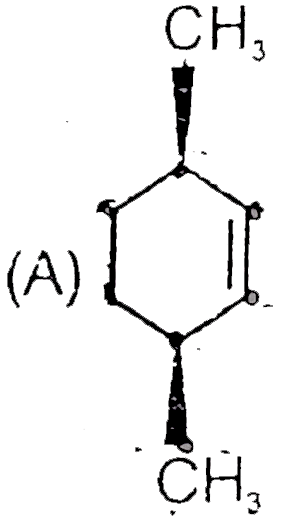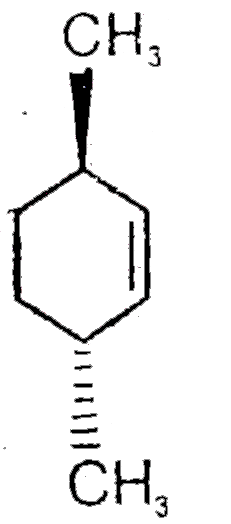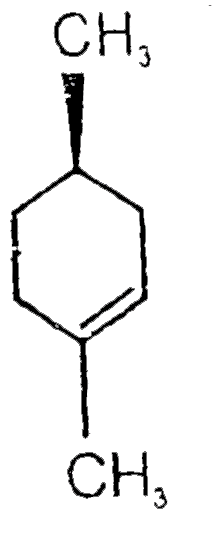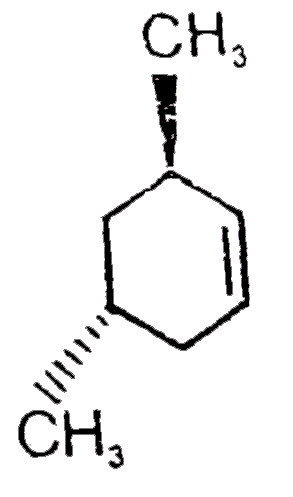An optically active hydrocarbon X has molecular formula C6H12. X on catalytic hydrogenation gives optically inactive C6H14.X could be
3− methyl−1−pentene
3−methl−2−pentene
4−methl−2−pentene
2−ethyl −1−butene
The correct Answer is:A
To solve the problem, we need to identify the optically active hydrocarbon X with the molecular formula C6H12 that, upon catalytic hydrogenation, produces an optically inactive compound C6H14.
1. Understanding Optically Active Compounds:
- An optically active compound contains at least one chiral carbon atom. A chiral carbon atom is a carbon atom that is attached to four different groups, leading to non-superimposable mirror images (enantiomers).
2. Molecular Formula Analysis:
- The molecular formula C6H12 indicates that the compound is likely an alkene (due to the degree of unsaturation).
3. Identifying Possible Structures:
- We need to consider the possible structures of C6H12 that could be optically active. The presence of a double bond and the arrangement of substituents can create chirality.
4. Evaluating the Given Options:
- Option 1: 3-methyl-1-pentene:
- Structure: CH3−CH2−CH=CH−CH3 with a methyl group on the third carbon.
- This compound has a chiral center at the third carbon, making it optically active.
- Option 2: 3-methyl-2-pentene:
- Structure: CH3−CH=CH−CH2−CH3.
- This compound does not have a chiral center; thus, it is not optically active.
- Option 3: 4-methyl-2-pentene:
- Structure: CH3−CH=CH−CH(CH3)−CH3.
- This compound also does not have a chiral center and is not optically active.
- Option 4: 2-ethyl-1-butene:
- Structure: CH2=CH−CH2−CH3 with an ethyl group on the second carbon.
- This compound does not have a chiral center and is not optically active.
5. Catalytic Hydrogenation:
- When we perform catalytic hydrogenation on 3-methyl-1-pentene, the double bond is converted to a single bond, resulting in 3-methylpentane.
- Structure of 3-methylpentane: CH3−CH2−CH(CH3)−CH2−CH3.
- This compound does not have any chiral centers, making it optically inactive.
6. Conclusion:
- The only compound that meets the criteria of being optically active and yielding an optically inactive product upon hydrogenation is 3-methyl-1-pentene.
Final Answer:
X could be 3-methyl-1-pentene.
- An optically active compound contains at least one chiral carbon atom. A chiral carbon atom is a carbon atom that is attached to four different groups, leading to non-superimposable mirror images (enantiomers).
- The molecular formula C6H12 indicates that the compound is likely an alkene (due to the degree of unsaturation).
- We need to consider the possible structures of C6H12 that could be optically active. The presence of a double bond and the arrangement of substituents can create chirality.
- Option 1: 3-methyl-1-pentene:
- Structure: CH3−CH2−CH=CH−CH3 with a methyl group on the third carbon.
- This compound has a chiral center at the third carbon, making it optically active.
- Option 2: 3-methyl-2-pentene:
- Structure: CH3−CH=CH−CH2−CH3.
- This compound does not have a chiral center; thus, it is not optically active.
- Option 3: 4-methyl-2-pentene:
- Structure: CH3−CH=CH−CH(CH3)−CH3.
- This compound also does not have a chiral center and is not optically active.
- Option 4: 2-ethyl-1-butene:
- Structure: CH2=CH−CH2−CH3 with an ethyl group on the second carbon.
- This compound does not have a chiral center and is not optically active.
- When we perform catalytic hydrogenation on 3-methyl-1-pentene, the double bond is converted to a single bond, resulting in 3-methylpentane.
- Structure of 3-methylpentane: CH3−CH2−CH(CH3)−CH2−CH3.
- This compound does not have any chiral centers, making it optically inactive.
- The only compound that meets the criteria of being optically active and yielding an optically inactive product upon hydrogenation is 3-methyl-1-pentene.
X could be 3-methyl-1-pentene.
Topper's Solved these Questions
- HYDROCARBONSBOOK - A2ZCHAPTER - HYDROCARBONSEXERCISE - Chemical Properties Of Alkanes
97 Videos
- HYDROCARBONSBOOK - A2ZCHAPTER - HYDROCARBONSEXERCISE - Methods Of Preparation Of Alkanes
31 Videos
- ENVIRONMENTAL CHEMISTRYBOOK - A2ZCHAPTER - ENVIRONMENTAL CHEMISTRYEXERCISE - Section D - Chapter End Test
30 Videos
- HYDROGENBOOK - A2ZCHAPTER - HYDROGENEXERCISE - Section D - Chapter End Test
30 Videos
Similar Questions
C(C6H12), and optically active dydrocarbon which on catalytic hydrogenation gives an optically inactive compound, C6H14.
View SolutionGive the structure of an optically active alkene (A) having the lowest molecular mass, which on catalytic hydrogenation gives an optically inactive compound (B).
View Solution
Knowledge Check
An optically active alkene with the molecular fomula C6CH12 which upon hydrogenation gives optically inactive alkane is
A2 - hexaneB3 - methyl - 2- penteneC2 - methyl -2- penteneD3 - methyl-1-penteneAn optically active compound A with molecular formula C6H14 undergoes catalytic hydrogenation to give an optically inactive product. Which of the following structures for A is/are consistent with all the data?
A B
B C
C D
D
Optically active 'P' has the molecular formula C6H12 and catalytic hydrogenation converts into achiral C6H14 . The structure of 'P' is -
A B
B C
C D
D
C(C6H12), and optically active dydrocarbon which on catalytic hydrogenation gives an optically inactive compound, C6H14.
View SolutionGive the structures of (A),(B) and (C)(explanation is not required ).
i. (A)(C4H8) that adds on HBr in the presence and in the absence of peroxide to give the same product, C4H9Br.
ii. (B)(C4H8), which when treated with H2O/H2SO4 gives C4H10O that cannot be resolves into optical isomers.
iii. (C)(C6H12, an optically active hydrocarbon which on catalytic hydrogenation gives an optically inactive compound, C6H14)
View SolutionAn optically active compound A with molecular formula C8H14 undergoes catalytic hydrogenation togive meso compound, the structure of (A) is:
View SolutionEthane, with the molecular formula C2H6 has
View SolutionEthane, with the molecular formula C2H6 has
View Solution
